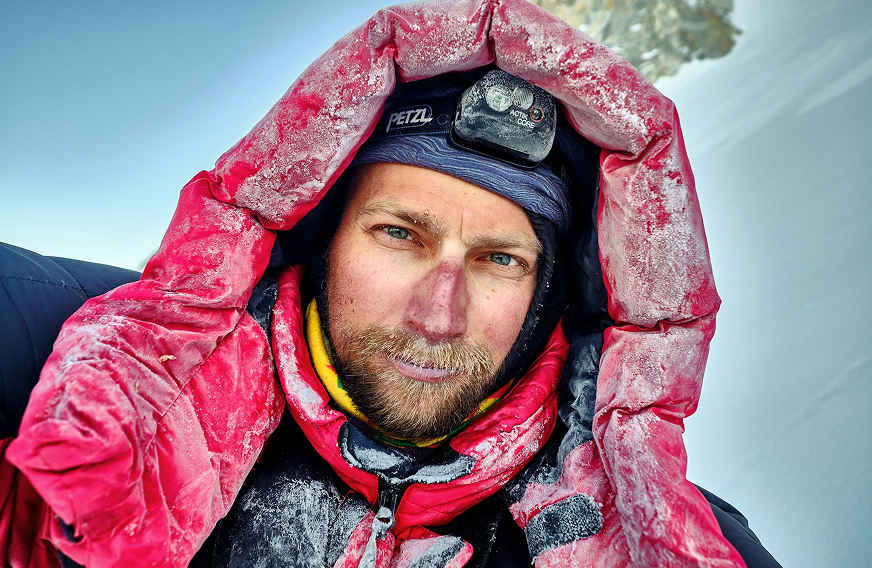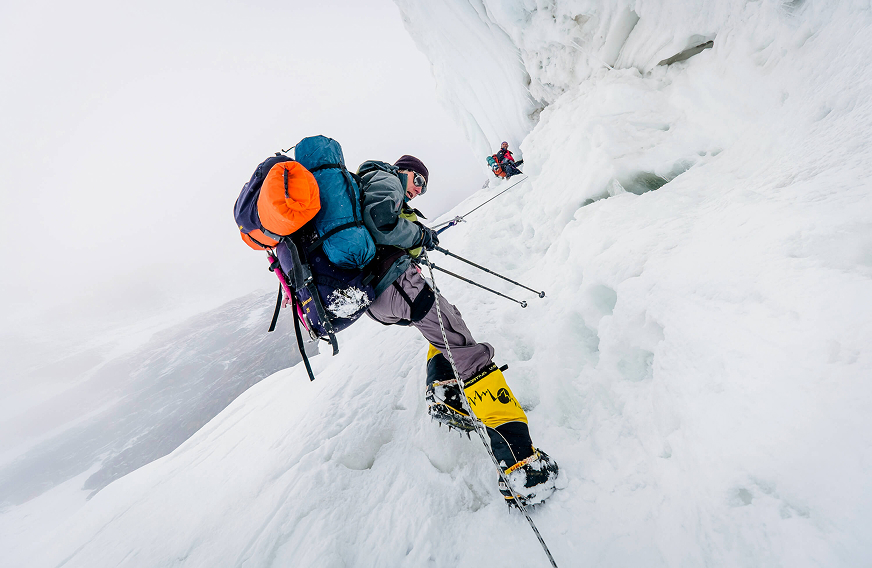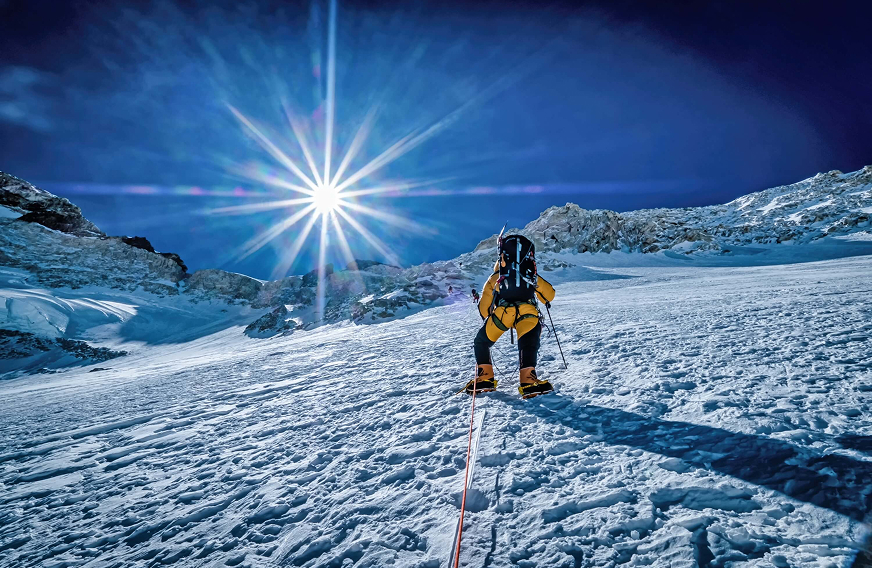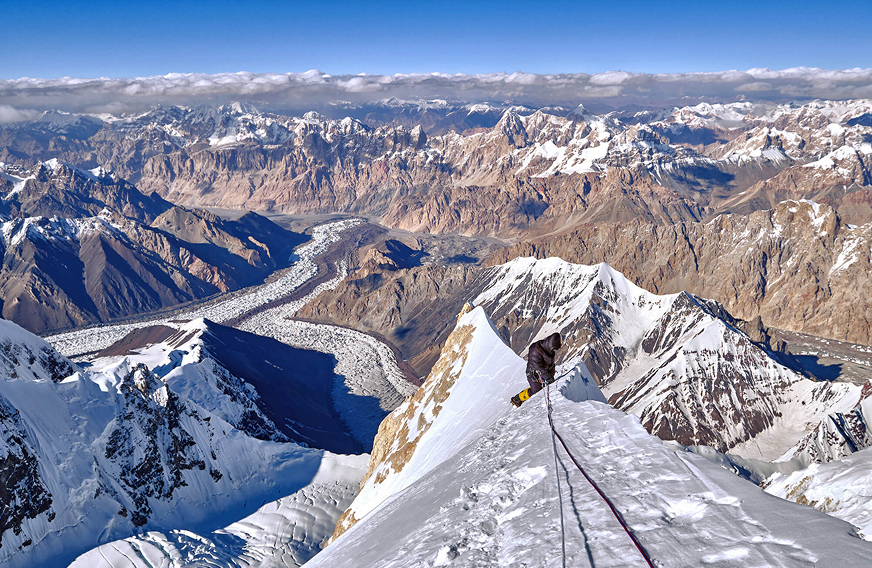Saulius Damulevičius
8 000 metres — only halfway there

From a personal collection
A conversation about balancing risk and ambitious goals with high altitude climber Saulius Damulevičius
There’s a place on earth where breath is a privilege, and every step tests the boundary between persistence and surrender, 8,000 metres is the realm of wind, avalanches, and air so thin it stings your lungs. Saulius Damulevičius, one of Lithuania’s most celebrated high-altitude alpinists and keynote speaker at @Shibui, knows that place like the lines on his frostbitten hands.
We spoke to him about what climbing the world’s highest peaks can teach us about business — and life.
Divide the climb, or break under it
Experience softens risk, but never erases it
“If you think an eight-thousander will be easy, think again. These are the highest peaks on earth. You need to know your limits and remember how little is under your control. Climbers say: the mountain will always be better prepared than you. It always has surprises. We divide risk into subjective — training, skill, preparation — and objective: avalanches, weather, earthquakes. You can reduce risk, but you can’t erase it. For example, we avoid climbing right after snowfall or tackle dangerous sections early when the snow is firmest.”

From a personal collection
Summit fever vs. survival instinct
We love to talk about summits. Even in business, we say, “he reached the top.” But Saulius offers a correction: “The summit is only half the journey.”
Sure, it’s the goal — the magnet pulling you through long expeditions. But people forget: getting down safely matters just as much.
And the hardest decision? Turning back when the summit is within reach — after months of training, a fortune of time and money, and all the strength you’ve got left.
“Our bodies weren’t built for these heights. Above 7–8 km, the ‘death zone,’ you can’t survive for long — sometimes just a few days, sometimes hours. Even acclimatised, it’s hard to move, sleep, or take in calories. And the brain, starved of oxygen, struggles to make sound choices. That’s why before an expedition, I run through possible scenarios, set strict ‘turnaround times,’ and follow rules: if I haven’t reached the summit by a set hour, I descend, no matter how painful.”

From a personal collection
From the mountain diary
“July 26, just before midnight, I was climbing Broad Peak’s snowy slopes at 7,450 m. The night was absurdly warm, still, moonlit. I couldn’t believe my luck — two days earlier, it had taken me sixteen hours to reach C2, shattered by sun and slush. And now? I was leading from the front.
Israfil, Vitaly, Anton, and I set off at 19:30 — first out of a dozen climbers. I visualised the route ahead: over the snow wall, around the crevasse, traverse to the saddle, then up the ridge to the summit. Eight hours, maybe. I imagined the summit photo, raising the Lithuanian flag, sending a text home: ‘Summit!’
‘BUF!!!’ — a low thud. The slope shifted under me. I looked up: a crack, just two metres away. I was standing at nearly 8 km, on a slab of frozen snow, poised to break away.”
The moment of choice
“‘Foti, stop where you are! The slope’s unstable!’ I called out, asking others to pass the word to Israfil and the Russian climbers. I radioed Anton: ‘It’s bad up here.’ He asked if I could see the snow wall. ‘No,’ I said, ‘I’ll try to climb a little higher.’
I moved slowly, each step making the slope crack beneath me. Heart hammering. Step by step, torchlight sweeping the snow. I realised the wall was still fifty, maybe a hundred metres away. ‘This isn’t Russian roulette,’ I thought. I stopped.
After ninety minutes waiting on that brittle ledge, Anton radioed back: ‘Saulius, we tested it — even a small movement could trigger an avalanche. You need to come down.’
Decision made. ‘Understood, descending,’ I answered. I mapped my descent in my head. Below, all the headlamps were already pointed downhill. Not a single daredevil pushing their luck tonight. Farewell, summit. This year, twice I’ve turned back within touching distance.”

From a personal collection
Life in a state of absolute focus
Why climb?
“It’s hard to explain. But these expeditions change how you see life. Up there, nothing is guaranteed. Not warmth, not shelter, not life itself. You learn to ration strength, choose wisely, avoid fatal mistakes. And you live in this heightened state of focus, where every decision matters. A friend once asked: imagine what we could achieve at work if we operated at this level of concentration.
But let’s be honest — up there, there’s no social noise, no office stress, no inbox. It’s a purer life. It sharpens your aim, your teamwork, your judgement.”
Neither Taliban attacks, nor the deaths of friends on the slopes, nor snapped ropes have stopped Saulius from chasing the world’s highest summits.

From a personal collection
Grit, passion, and the long road
“People think success is luck or talent. But in climbing, it’s desire and endurance that matter — the will to suffer through cold, fatigue, failure. Fourteen eight-thousanders rise above the death zone; Lithuanians haven’t yet climbed six. These mountains cast a spell. And climbing without oxygen or porters, you have to choose your goals carefully, build experience gradually. Perseverance makes the impossible possible.”
But Saulius reminds us: “The summit isn’t the real goal. The process is — from preparation to safe return. Above 7–8 km, you understand how fragile life is, how precious time is. You constantly weigh options, risks, and judgement. Back in the comfort zone, it’s easy to forget time is just as limited. That awareness only comes with age, with wisdom, or when tragedy strikes close to home.”
If you think Saulius is the right fit for Your Team, contact us and book a keynote session “How to climb a BIG mountain” at @Shibui.
